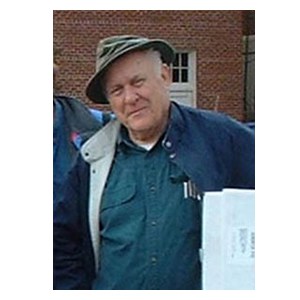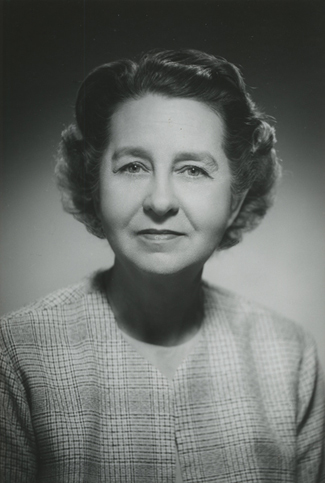History: Buttrick Hall’s scholar tree

In this photo, the Scholar Tree in front of Buttrick Hall has sprays of developing fruits that give it a golden cast. Photo by Steve Baskauf under a CC0 license.
This former state champion that stands in front of Buttrick Hall is a well-known tree at Vanderbilt and was featured in The Trees of Vanderbilt. Although this is not a particularly large species, this tree is old, having been planted by Mrs. Goodpasture of Vanderbilt Garden Club in 1954. In 60 years it has grown to a height of 20 m (64 ft.) with a crown spread of 16 m (52 ft.) and diameter of 75.5 cm (30 in.).
Buttrick Hall was for many years home to the Biology department. Two notable biologists from the department who interacted with the trees on campus were taxonomist Bob Kral and ecologist Elsie Quarterman.

Dr. Robert Kral
For many years, Robert Kral was the curator of the Vanderbilt herbarium and in his taxonomy classes taught many generations of students to identify trees and other plants. His dendrology classes always started with learning the trees on campus and he complained about the tree labels since that made it impossible to use those trees as “test specimens”. Dr. Kral was the consultant for the Trees of Vanderbilt book and is acknowledged for his contributions in the front matter of the book.

Dr. Elsie Quarterman. Vanderbilt University Special Collections and University Archives
Elsie Quarterman was a groundbreaking ecologist and faculty member in the department. She joined the faculty in 1944 when female faculty were rare and was the first woman to serve as a department chair in 1964. In addition to her scientific accomplishments in documenting the ecology of Tennessee, she also was instrumental in preserving Radnor Lake, Savage Gulf, and the unique cedar glade habitat in middle Tennessee. One of her most famous accomplishments was the rediscovery of the iconic Tennessee coneflower of the cedar glades — thought to be extinct for many decades. Bob Kral also played a role in the rediscovery when he recognized the specimens she had collected to be the Tennessee coneflower.
Dr. Quarterman’s contributions to the trees on campus began in 1953 when she and several others conducted an inventory of the trees on campus. This inventory had two important consequences. It led the Vanderbilt Garden Club to purchase the first fifty labels in a tree labeling project that grew and continues today. The other consequence is that it resulted in the creation of a “wish list” of trees to plant on campus, and eventually resulted in the planting of this “Chinese scholar tree” and several other trees on campus that are now large trees.
Return to the historical tree tour page for scholar tree 4-208.
Tennessee Botanists Hall of Fame, Tennessee Native Plant Society
Kral-ing Through Time: The Impact of Robert Kral on the Past, Present, and Future of Botany in the Southeastern U.S. Botany 2017 conference colloquium.
Kara Furlong. “Elsie Quarterman, who rediscovered Tennessee coneflower, dies at 103”. Vanderbilt News. 12 June 2014.
Stewart Ware. “Resolution of Respect: Elsie Quarterman, 1910–2014”. ESA Bulletin 96(1):74-76. doi:10.1890/0012-9623-96.1.74
